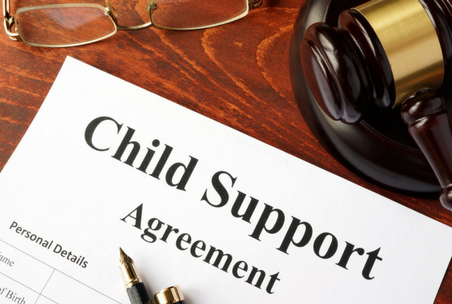The Latest, Surprising Portrait of Custodial Moms and Dads and Their Child Support
3 min read
Date Published: 03/08/2018
Last Updated: 03/08/2018
National Fatherhood Initiative Blog / Latest Articles
3 min read

Because so many of our organization partners serve custodial and noncustodial moms and dads, National Fatherhood Initiative (NFI) keeps an eye out for the latest information and data on what’s happening around child support. While we’re keen to raise awareness of the importance of recognizing and leveraging dads’ non-financial contributions to their children’s health and well-being, the fact is many dads face child support challenges, whether they’re noncustodial and owe child support or custodial and are owed support.
The U.S. Census Bureau just released its most recent data on custodial moms and dads and their child support. The data are based on perhaps the most significant ongoing survey in America regarding child support, the Child Support Supplement to the Current Population Survey. The most recent survey took place in April 2016 and provides data for the 2015 calendar year. Here are some of the highlights:
Researchers also compared some of the data across more than a decade, and in some cases more than two decades. Some of those comparisons provide a portrait of trends in child support that might surprise you. For example:
The report further breaks down the data by demographics and continues to compare custodial moms and dads on a variety of variables.
But perhaps the most useful data for serving custodial and noncustodial parents covers the reasons for the lack of a legal child support arrangement. Knowing the most common reasons can help you gain a better understanding of the foundation for the child support challenges faced by custodial and noncustodial parents. Custodial parents cite the following reasons, from highest to lowest proportion, for not having a legal agreement.
Nearly 40 percent of parents cited the first two reasons. Nearly 34 percent cited the third reason.
I encourage you to download the full report and share it with your colleagues that serve families with child support challenges.
I also encourage you to check out National Fatherhood Initiative’s booster session that helps noncustodial dads better understand child support. It’s part of the FatherTopics™ Collection for Non-Custodial Dads. Click here to check it out. It also includes sessions that help noncustodial dads with other issues that many of them face, such as access and visitation and money management.
How much do you know about the reasons for a lack of a legal child support agreement between parents?
Did you know that National Fatherhood Initiative has a booster session that helps noncustodial dads better understand child support?
Date Published: 03/08/2018
Last Updated: 03/08/2018
Download the ebook to learn how to create fatherhood initiatives that engage every sector of community life.

Train Your Staff
Fatherhood Programs
Fatherhood Data
© 2025 National Fatherhood Initiative®. All rights reserved.